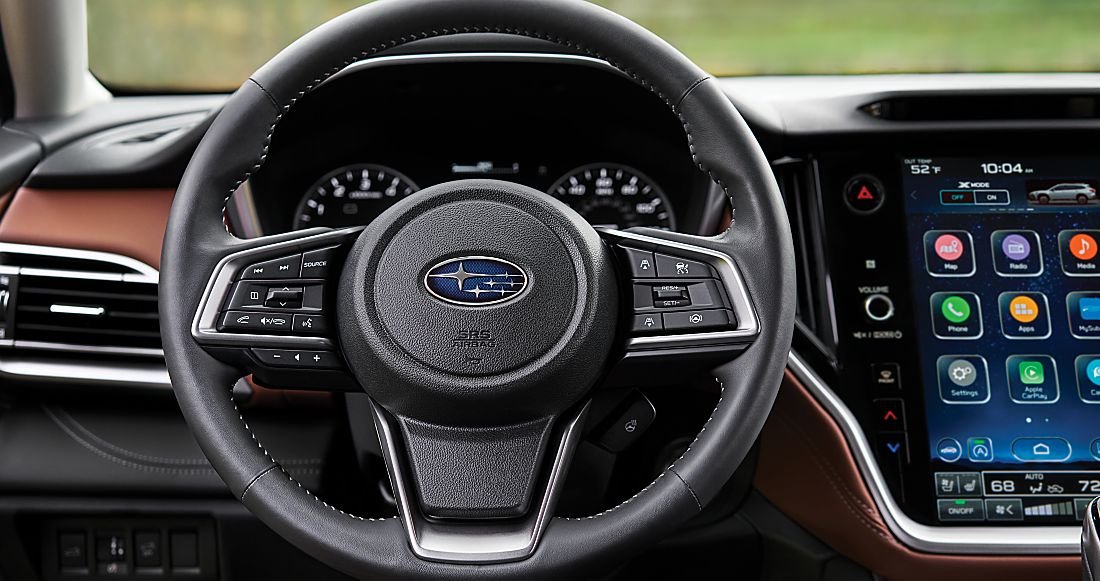
Why Subaru Just Increased Prices on Nearly All Its Models
Introduction to Subaru’s Pricing Strategy
Subaru is an iconic automotive brand known for its commitment to producing vehicles that emphasize safety, reliability, and all-wheel drive capability. Founded in 1953 by the Japan-based conglomerate Subaru Corporation, the brand has steadily gained a loyal customer base over the decades. Historically, Subaru distinguished itself in the crowded automotive marketplace by catering to outdoor enthusiasts and families alike, thanks to its versatile vehicle offerings like the Outback and Forester. Its reputation for longevity and all-weather performance has helped Subaru establish a strong market presence, particularly in regions prone to harsh driving conditions.
The automotive industry is characterized by fierce competition, where comprehensive pricing strategies can significantly influence both consumer perception and brand positioning. Pricing serves not merely as a tool to reflect production costs but as a strategic component to strengthen brand loyalty and value proposition. For Subaru, keen insight into consumer preferences and market dynamics directly informs its pricing strategies, enabling the brand to attract a diverse clientele while maintaining its competitive edge.
As the automotive landscape continues to evolve, manufacturers face growing challenges, such as rising production costs, supply chain disruptions, and fluctuations in consumer demand. In this context, understanding Subaru’s pricing strategy becomes vital, particularly as significant price increases are anticipated in 2025. These changes will likely influence how consumers perceive the brand and its offerings. This blog post will delve deeper into the factors contributing to Subaru’s impending price adjustments, shedding light on the rationale behind these decisions and their potential implications for the brand’s future in the automotive sector.
Market Trends Influencing Price Adjustments
In recent years, various market trends have emerged, significantly impacting the pricing strategies of automotive manufacturers, including Subaru. One of the most prominent factors is inflation, which has been a persistent concern across global economies. Rising inflation rates lead to increased operational costs for manufacturers, as expenses related to labor, logistics, and raw materials surge. This heightened financial pressure translates into price increases for consumers, as companies strive to maintain profit margins while covering inflated costs.
Furthermore, changing consumer behaviors also play a crucial role in pricing adjustments. With the rise of eco-consciousness, there has been a marked shift towards electric and hybrid vehicles. Automakers, including Subaru, are adapting to this demand by shifting their resources towards research and development of greener technologies. This transition often requires substantial investments, which can yield higher prices for newer models. Subaru’s commitment to sustainability reflects a broader market trend that necessitates adjusting pricing strategies to align with consumer expectations and emerging automotive standards.
Another contributing factor is the rise in raw material costs, which has been exacerbated by global supply chain disruptions. The Covid-19 pandemic, for example, severely impacted the availability and price of essential components such as semiconductors. As automakers navigate these challenges, the increased cost of materials often results in higher retail prices for vehicles. These economic factors collectively signify a transformative phase within the automotive sector, compelling brands like Subaru to rethink their pricing structures in light of ongoing economic pressures and shifts in the marketplace.
Subaru’s Supply Chain Challenges
The automotive industry has faced significant disruptions in recent years, and Subaru is no exception. One of the primary challenges impacting Subaru’s operations is the ongoing global semiconductor shortage. Semiconductors are critical components in modern vehicles, as they power essential systems such as infotainment, safety features, and engine management. The scarcity of these chips has led to production delays, forcing Subaru to scale back manufacturing capacity and consequently impact inventory levels.
Additionally, logistics issues have compounded the supply chain crisis. Global shipping delays and port congestions have created hurdles in transporting raw materials and finished vehicles. As a result, Subaru’s ability to deliver products to dealerships in a timely manner has been hampered. This not only affects the availability of the 2025 models but also creates a ripple effect on production schedules. These logistical challenges have prompted Subaru to reevaluate its supply chain strategies, leading to increased production costs that ultimately influence retail pricing.
Moreover, economic factors such as inflation have led to heightened costs for components that Subaru relies on, including metals and plastics. The combination of soaring supplier prices, scarcity of critical parts like semiconductors, and logistical hurdles contributes to an overall increase in Subaru’s production expenses. As Subaru navigates these complexities, the manufacturer is faced with the challenge of passing on some of these costs to consumers through higher prices for the 2025 model year.
In light of these supply chain challenges, Subaru must adapt to an evolving market environment. The interplay of these factors not only informs pricing strategies but also plays a crucial role in maintaining consumer trust and satisfaction amid increasing automobile costs.
Competitive Landscape and Pricing Pressure
The automotive market is characterized by a highly competitive landscape where manufacturers are continually adjusting their pricing strategies to maintain market share and appeal to consumers. As of 2025, Subaru’s price increases must be analyzed within the broader context of pricing pressures exerted by competitors. Major automotive players like Toyota, Honda, and Ford have all been adjusting their pricing in response to shifts in consumer demand and economic conditions. For Subaru, navigating this competitive terrain is essential to ensure continued relevance in a saturated market.
In response to rising production costs and supply chain challenges, many automobile manufacturers have raised their prices. This trend is not isolated to one brand; instead, it reflects a collective reaction to inflationary pressures and increased raw material costs. For instance, competitors such as Toyota recently increased the prices of their popular models, citing the same economic factors that affect Subaru. This situation places Subaru in a position where it must balance its price adjustments with the need to attract buyers who are increasingly cost-conscious.
Subaru’s pricing strategy also needs to consider the alternative fuel vehicle segment, which is gaining momentum across the industry. Automakers are investing heavily in electric and hybrid models that often come at a premium but promise long-term savings on fuel, thus appealing to environmentally-conscious buyers. If Subaru aims to remain competitive, particularly in regions where electric vehicle adoption is robust, it might need to enhance its offerings or provide substantial value in its traditional gas-powered lineup.
Ultimately, understanding the competitive landscape is crucial for Subaru’s ongoing success. By strategically aligning its price points with those of its competitors while ensuring that it continues to deliver value, Subaru can effectively navigate the pricing pressures of 2025 and beyond.
Technological Advancements and Their Costs
As the automotive industry evolves, manufacturers like Subaru are progressively embracing technological advancements that align with the global shift towards sustainability and enhanced safety. Specifically, Subaru is investing significantly in the development of electric vehicles (EVs) and advanced safety features. This shift not only reflects a response to consumer demands but also an alignment with regulatory pressures aimed at reducing carbon emissions and improving roadway safety.
The costs associated with these technological innovations are multifaceted. For starters, the engineering and research and development required to produce electric vehicles entail substantial investments. This includes the cost of materials, such as batteries, which are critical to the functionality of EVs. Furthermore, Subaru’s transition to electric powertrains necessitates advanced infrastructure and training for workers, adding another layer of expenditure that must be factored into the overall cost structure of their vehicles.
In addition to electric vehicles, Subaru is enhancing its focus on safety features. The incorporation of technologies such as driver-assistance systems, collision avoidance systems, and adaptive cruise control require both significant initial investment and ongoing development. These systems are not merely add-ons; they are becoming essential standards that consumers expect in modern vehicles. As a result, the expenses involved in equipping Subaru’s 2025 models with these sophisticated technologies justify the corresponding price increases.
In summation, the technological advancements reflected in Subaru’s upcoming vehicle models are not only about meeting consumer expectations but also about responsibly navigating the future of transportation. As these innovations are integrated, they contribute to Subaru’s repositioning within the market, justifying the price adjustments anticipated in 2025.
Consumer Perception and Brand Loyalty
Consumer perception plays a significant role in a brand’s ability to implement price increases without alienating its customer base. In the case of Subaru, the brand is often associated with attributes such as reliability, safety, and durability. For many consumers, these qualities embody a sense of trust that translates into brand loyalty. Subaru has cultivated a dedicated following, particularly among outdoor enthusiasts and families, which is indicative of the demographic profile that the brand primarily targets. This connection is vital when considering the acceptance of potential price increases in 2025.
Moreover, Subaru’s customers tend to be more willing to spend on vehicles that meet their expectations for performance and safety. The brand’s emphasis on practical features, coupled with its strong resale value, positions it favorably in the eyes of consumers. Such brand loyalty can buffer against negative reactions to price hikes, especially if customers believe they are receiving additional value in return, such as enhanced technology or improved fuel efficiency in new models. Additionally, Subaru’s commitment to safety, exemplified by high scores in crash tests, provides a significant basis for continued customer support.
Furthermore, Subaru’s active engagement with its community, through events and social media, helps strengthen its bond with consumers, creating an environment where customers feel valued and heard. This connection can lead to a higher tolerance for price adjustments, particularly if they are framed as necessary to maintain the brand’s reputation for quality. Understanding these dynamics can provide insights into how Subaru may navigate consumer reactions to price increases in the coming years. As customer expectations evolve, it will be essential for Subaru to remain attuned to these perceptions to uphold its standing in a competitive automotive market.
Impact of Regulatory Changes
As we look ahead to 2025, the automotive industry is poised to undergo significant transformations due to evolving regulatory standards. One of the most notable areas of change pertains to emissions and safety regulations, which are designed to enhance environmental sustainability and safeguard the wellbeing of consumers. These new regulations are not only expected to introduce stricter limits on carbon emissions but also impose advanced safety technologies that must be integrated into vehicles. For manufacturers like Subaru, adapting to these regulations presents both challenges and opportunities in terms of production costs.
The anticipated emission standards will likely necessitate increased investments in research and development for more fuel-efficient and eco-friendly technologies. Subaru, which has a longstanding commitment to efficient and environmentally conscious vehicles, may face pressures to enhance its hybrid and electric vehicle offerings. Consequently, the costs associated with complying with these standards could lead Subaru to reassess its pricing strategy in 2025. Furthermore, the integration of advanced safety features, which are becoming mandatory, may also inflate manufacturing costs, as Subaru would need to upgrade its existing models to include necessary features such as improved crash avoidance systems and enhanced occupant protection measures.
This regulatory landscape presents a dual challenge for Subaru: the need to balance compliance with maintaining competitive pricing. While these investments may raise the upfront costs of producing vehicles, they also offer an avenue for differentiation in a crowded market, attracting environmentally conscious consumers. However, Subaru’s pricing structure might reflect some of these increased costs, potentially inflating vehicle prices in the coming years. As such, understanding the implications of regulatory changes is vital for consumers and stakeholders alike, who will need to navigate a shifting automotive landscape influenced by policy measures.
Sales Projections and Financial Considerations
As Subaru navigates the landscape of anticipated price increases in 2025, a comprehensive analysis of its sales projections and financial considerations becomes crucial. The automotive market has been notably dynamic, and Subaru’s strategy to alter pricing reflects broader economic trends and consumer behaviors. The company is poised to implement these price adjustments as a measure to offset rising production costs, fluctuating material prices, and supply chain challenges that have recently impacted the automotive sector.
Subaru’s management estimates that the implemented price increase will directly influence overall revenues and profitability. Historically, the brand has demonstrated resilience during market fluctuations, largely due to its loyal customer base and reputation for producing reliable vehicles. However, with the projected price hikes, the brand must carefully assess the elasticity of demand for its models. If consumer demand remains stable, Subaru could see a significant uptick in revenue despite the enhanced pricing structure.
Financial projections for 2025 suggest that with the price adjustments, Subaru anticipates a growth in average transaction prices. This can be beneficial to the company’s bottom line as it could lead to higher margins per vehicle sold. However, concurrently, there is a potential risk of alienating price-sensitive customers who may seek alternatives from competitors. The brand is likely to implement targeted marketing strategies to mitigate any adverse effects, emphasizing the value proposition of owning a Subaru vehicle, which includes reliability, safety, and performance.
In conclusion, Subaru’s sales projections and financial considerations in light of the price increases scheduled for 2025 signify a pivotal moment for the company. By balancing pricing strategies with consumer demand, Subaru aims to navigate the anticipated economic changes successfully and maintain its profitability trajectory in the years to come.
Conclusion: The Future of Subaru’s Pricing
As this analysis has demonstrated, Subaru’s pricing strategy for 2025 appears influenced by a multitude of factors, from rising manufacturing costs to evolving market dynamics. The brand’s commitment to quality and its focus on all-wheel drive technology remain central to its value proposition. Yet, the impending price increases are likely to reshape consumer perception and influence buying decisions, particularly in an increasingly competitive automotive landscape.
The trends suggest that Subaru’s price adjustments are aligning with broader industry shifts, where many automakers are grappling with inflationary pressures and supply chain challenges. As a result, prospective buyers may find themselves paying a premium for Subaru vehicles compared to previous models. However, Subaru’s loyal customer base may still prioritize the brand’s reliability and resale value, viewing the price hike as a necessary step to maintain the quality they expect.
Looking ahead, potential outcomes for Subaru could include a reconsideration of its pricing strategy in response to consumer feedback, or an emphasis on value-added features to justify the increase. For consumers contemplating a Subaru purchase amidst these changes, it is advisable to stay informed about pricing trends and to consider the advantages of purchasing during promotional events or when new models are introduced. The market is evolving quickly, and understanding Subaru’s pricing strategy will be crucial in navigating these developments.
In conclusion, while Subaru’s price increases may pose challenges for some buyers, they also reflect the brand’s steadfast commitment to delivering high-quality, dependable vehicles. Consumers who remain engaged with Subaru’s offerings and future developments will be better positioned to make informed purchasing decisions as this storied automaker navigates the changing economic landscape.




